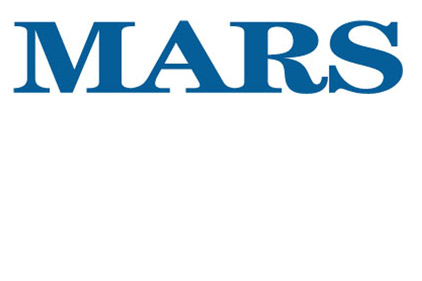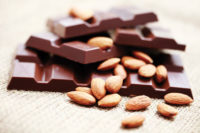Mars Chocolate Reaches Sustainability Milestone
Sustainable peanuts rose to more than half of the company’s supply from U.S. peanut farmers

Mars Chocolate announced that the company met a significant benchmark in ensuring the sustainability of edible peanuts. In 2014, 51 percent of the peanuts used for the company’s U.S. products were high-oleic acid peanuts (HOAPs), helping the company keep pace with increasing product demand.
The peanut industry faces a challenge today to make sure that it is growing enough high quality, edible peanuts to meet growing demand. Mars Chocolate has committed to using 100 percent HOAPs in its products by 2017, working with peanut farmers, shellers and the industry as a whole to support the production of a sustainable supply of quality HOAPs by investing in science, creating more advanced breeding approaches, mitigating disease and encouraging greater agricultural efficiencies.
“We are seeing more and more U.S. peanut farmers committing themselves to ensuring the sustainability of edible peanuts by planting HOAPs, and we are encouraged by it,” said Anne-Marie DeLorenzo, Strategic Sourcing Manager of Peanuts for Mars Chocolate North America. “High-oleic acid peanuts are more likely to stay fresh while also possessing all of the qualities that have made peanuts an attractive crop for U.S. farmers for years.” Edible peanuts are one of Mars Chocolate’s foundational ingredients and are a critical component to two of the company’s most popular products worldwide - M&M’S Peanut Chocolate Candies and SNICKERS. As a result of the growing global demand for these billion dollar brands, Mars – one of the top global buyers of high quality edible peanuts - projects that its need for high quality whole peanuts will triple by 2025.
Peanuts remain a high yielding, less costly, and healthy nut that require low agriculture inputs, giving them a natural advantage as a crop. However, there are challenges that peanut farmers face in growing high quality edible whole peanuts, including lower investment in peanuts research as compared to other competitive crops. Furthermore, peanuts can be contaminated during drought conditions or as a result of improper post-harvest handling. As the world continues to experience more droughts, manufacturers and growers of peanuts can expect to face persistent threats. Improving farmer practices around the world will help mitigate these problems while helping farmers overall.
The industry is beginning to see a need to produce edible peanuts that reflect consumers’ desire for a high quality, shelf-stable nut, so that peanuts remain a competitive crop for farmers in many origin countries to grow. With these concerns in mind and in collaboration with the industry, Mars has supported the Peanut Genomic Initiative (PGI) aimed at developing high oleic acid peanuts which are disease resistant and provide a better quality alternative for standard edible nuts.
“The industry recognizes a need to work with farmers to grow peanut varieties that will contribute to the long-term sustainability of the crop by keeping peanuts competitive, free of disease, and satisfying to consumers,” said DeLorenzo. “Consumers know that peanuts have many healthy components. HOAPs take this a step further by further boosting the natural healthfulness of the crop.”
Mars Chocolate’s initiative to improve peanut sustainability contains three main elements: support of crop improvement and breeding; expanding supply and the use of HOAPs in places where peanuts are grown; and developing quality and food safety, especially in managing the aflatoxin contamination, a toxin which can contaminate peanuts. In addition, the company has invested more than $1.4 million to support the efforts of the International Peanut Genome Initiative, a group of crop geneticists that includes representatives from Mars, to map the peanut genome. In April 2014, this group reached a significant milestone when they announced that this goal had been achieved and that the wild peanut genome sequence will now be available to researchers around the world to assist in the breeding of more productive peanut varieties that are resistant to diseases.
“We have every expectation we will meet our 2017 goal of utilizing 100 percent of HOAPs in our products.” said DeLorenzo. “We are also pleased to see more members of the industry and farmers excited about the growth and use of high oleic acid peanuts.”
Looking for a reprint of this article?
From high-res PDFs to custom plaques, order your copy today!






